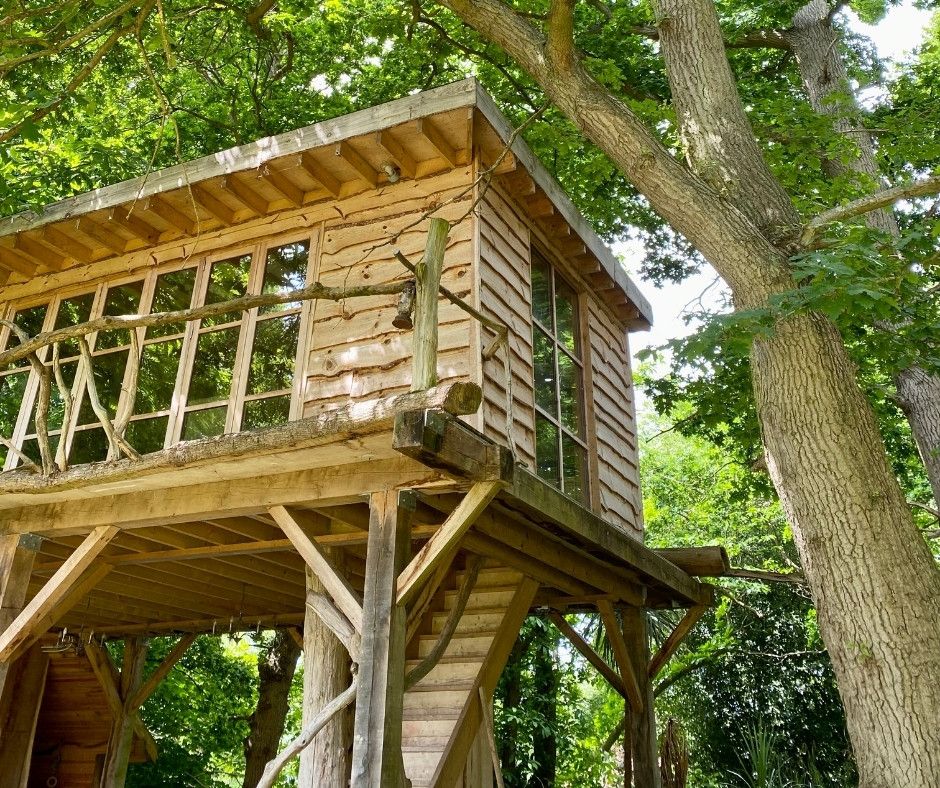Whether it's a physical or mental space, discover your own personal sanctuary and take a moment to retreat
In 2021, researchers from the University of Oxford had a breakthrough. The culmination of 15 years of research and clinical practice, they trialed a new way of treating patients with psychosis: The Feeling Safe Programme. Working on the basis that fear can exacerbate persecutory delusions and lead to behaviour that isolates and ostracises people, the programme helps people develop new memories of safety – and it works. The trial found that the Feeling Safe Programme was the most effective treatment for persecutory delusions, rising above other treatments, such as befriending and CBT.
And it makes sense. The desire to feel safe and sheltered has been around since the first caveman headed into the rocks, and today that right to shelter is set in stone under Article 25 of the Universal Declaration of Human Rights.
For many, ‘shelter’ is more than just four walls, and the places that give us that sense of safety don’t just protect us from the elements, they take us away from everyday stresses, pressures to perform, angst, noise, and daily demands. More than just a shelter, spaces become a ‘sanctuary’.
Our own personal sanctuaries will look and feel completely different, they might be within four walls, or they might have none at all. But for all their many shapes and sizes, they each have one thing in common, and that’s the way they make us feel.
Higher ground
“I am a big fan of treehouses, from the most basic attempts by the youngest of hands to the full-on, flashy, luxury kind,” Chloe Barry, an art psychotherapist and nature-inspired therapist, shares as she reflects on the sanctuary she had as a child. “Even though the treehouse of my youth was very basic, it was my refuge, a little place accommodated by nature that held me protectively within its branches.”
Chloe’s treehouse was essentially a few planks of woods nestled between two conifer trees in the back garden of her family home, yet it still felt incredibly significant – crucially, she says, because the climb up the tree was a little too awkward for ‘big people’.
“The treehouse offered me the ultimate sanctuary, which was an opportunity to be alone without feeling alone,” Chloe says. “I feel like a treehouse is perfectly poised to hold this ambiguous need of mine in balance, as it feels like you enter another world where the human humdrum is quietened, yet the sounds of nature are there for you.”
These days, Chloe has taken what she learnt about environments that feel safe and welcoming, and created the Treehouse Art Studio – a beautiful treehouse, built by her husband, designed to host art therapy sessions. As she sees it, the space is a vital part of what makes those sessions so impactful.
“In some ways, simply moving from ground level to treetop level has a subtle psychological impact, in that it implies a shift toward new ways of understanding ourselves,” she says. “It also helps that the treehouse art studio is nestled between a lovely sweet chestnut tree on one side and an oak tree on the other, while other trees nearby all add to that sense of retreating into nature.”
Chloe’s treehouse studio is a working example of the ways in which the space we’re in can inspire calm, but also creativity. Though, of course, a treehouse is just one of many ways to capture this atmosphere…

Image| Courtesy of Chloe Barry
A moment of your time
“I’m very aware that ‘sanctuary’ might look different for each of us, as our understanding or need for it will be unique to our individual backgrounds,” Chloe explains. She shares how now, as a busy mum, her sense of sanctuary often involves taking time for herself. To achieve this, she doesn’t always need to be in a physical sanctuary – it can be created more subtly by enjoying a cup of tea in bed before the children wake up.
“In the past, sanctuary meant feeling safe and finding a physical space that I could value and feel valued within,” she adds. “I wonder if that is part of the beauty of a sanctuary; it is what we need it to be, and that may change over time.”
What feels good and right for each of us will look completely different from one person to the next. In fact, a ‘sanctuary’ doesn’t have a ‘look’ – it doesn’t have to be styled according to the rules of interior design though, of course, it can be if that’s what you need. It might be a room, or just a corner, in your home that is filled with all the things that you love or which spark joy. It could be a garden full of plants that bloom after you nurture them. It might be a public beauty spot you can stop to pause at, soaking in the environment around you. Or it might be none of those things, and instead be the five minutes you’ve put a boundary around so that you can breathe deeply before jumping into the rest of your day.
More and more, many of us are finding ourselves in need of a retreat from the busy world that we’re in. Bad news, work pressure, the demand to give more of ourselves to our daily responsibilities – it all adds up. Whether it be a space you can move to, or a mindset you can tune-into, a sanctuary is somewhere where we can be safe and secure. And we all deserve that.


Comments